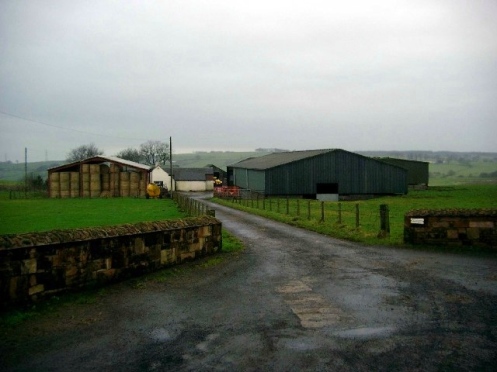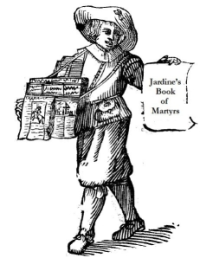The Battle of Drumclog, 1679: Wilson’s Version #History #Scotland
In 1751, an account of the Battle of Drumclog by William Wilson, a schoolmaster in the Park of Douglas parish, was published by John McCallum and sold by Robert Smith, bookseller ‘at the Sign of the gilt Bible’ in the Saltmarket, Glasgow, under the title of The true and impartial relation of the persecuted Presbyterians in Scotland; their rising in arms, and defeat at Bothwell-Bridge, in the year 1679 (Glasgow, 1751).

Drumclog Memorial (Built 1839, Rebuilt 1867) © Walter Baxter and licensed for .
William Wilson (1689–1757) was not born when the battle was fought. He was not an ‘impartial’ historical source, as he had been one of the post-Revolution McMillanites before he split from them. However, it is claimed that he consulted twelve sources, several in manuscript, for his accounts of the battles of Bothwell Bridge and Drumclog. One source he certainly used was Wodrow’s account, which also drew on original sources.
His work on the battles appeared again as A Relation of the Battle of Bothwell Bridge (Glasgow, 1797) and again in 1809 in Kilmarnock and in the An historical account of the lives and characters of Mr. W[illiam]. G[uthrie].
His account is as follows:
‘As to the rencounter at Drumclog, the true account of it is this. June 1st, [1679,] being the sabbath, the persecuted people of God met at Glesterlaw, in the parish of Loudo[u]n, for the public worship of God.’
‘Glesterlaw’ is the unnamed hill above Glaister, just to the west of Harelea Hill across the Tongue Burn.
‘Either late the night before, or very early this same morning; bloody [John] Graham or Claverhouse came from the new garrison at Glasgow, with three troop of horse and dragoons in great fury, vowing and swearing that whatever number were of them (meaning the honest people) he should be out through them; and according to his design, gave for his word, no quarters: and by the way, as he was plundering and spoiling houses, he took out of their beds, Mr. John King, and 17 honest country-men, whom he bound severely, two and two together, and drove them before him like beasts, and so marched towards Loudon-hill.
Immediately after divine worship was begun, by Mr. Thomas Douglas; the meeting was alarmed with the news of Claverhouse, his coming from Strathaven to surprize them; and that he had taken Mr. King, and others of their friends prisoners; whereupon, after a short consultation, they resolved, that for the relief of the prisoners, their own defence and the defence of the gospel, they would put their life in venture, and, through the Lord’s assistance, go and meet that cruel raging enemy; and, to the uttermost of their power, opose his hellish fury; and then drawing out all the men, who , any arms, and were willing to fight for the Lord’s cause, from the rest of the meeting, who were fifty horsemen, ill provided in arms, fifty footmen with guns, and 150 with halberts and forks.
Mr. [Robert] Hamilton was called to the chief command, and under him David Hackston of Rathillet, Henry Hall of Haughhead, John Balfour of Kinloch, Robert Fleeming [of Auchenfin], William Cleland, John Brown[, an ‘old soldier’].
Mr. Hamilton gave out the word, that no quarters should be given to the enemy; and then, with courage and zeal they marched forward, till they met with Claverhouse and his bloody company, near Drumclog, in the parish of Evandale, about a mile east from Loudon-hill.’
The site of the battle is usually placed about a mile north-east, rather than east, of Loudoun Hill.
Map of site of Battle of Drumclog Street View of possible battlefield
‘The enemy fired first on them, which they bravely withstood, and fired back on them with much gallantry; and after a short, but very warm engagement with the enemy, while the enemy were drawing near to them (a stank being betwixt them) John Balfour, with some horse, and William Cleland, with some foot, and after them the rest, most resolutely brake through that passage, with courage and valour upon the enemy; and, by the good hand of God upon them, they did instantly defeat, and Claverhouse and his bloody crew took flight.
They killed about thirty-six or forty of them, wounded others, shot Claverhouse’s horse under him, and he narrowly escaped. They relieved Mr. King and the rest of the prisoners, whom Claverhouse had commanded the guard to shoot if he lost; but they were all so hotly handled at this time, that the guard got another thing to mind, than to put this part of their orders in execution. They pursued the enemy about two miles, who, in great terror fled back to Glasgow.
Mr. Hamilton discovered a great deal of bravery and valour, both in the conflict with and pursuit of the enemy: but when he and some others were pursuing the enemy, others flew too greedily upon the spoil, small as it was, instead of pursuing the victory: and some without Mr. Hamilton’s knowledge, and directly contrary to his express command, gave five of these bloody enemies quarters, and then let them go: this greatly grieved Mr. Hamilton, when he saw some of Babel’s brats spared, after that the Lord had delivered them into their hands, that they might dash them against the stones, Psal. cxxxvii. 9. [‘Happy shall he be, that taketh and dasheth thy little ones against the stones.’]
In his own account of this [in a letter of December, 1685], he reckons the sparing of these enemies, and letting them go, to be among their first stepping aside; for which he feared that the Lord would not honour them to do much more for him; and says, that he was neither for taking favours from, nor giving favours to the Lord’s enemies.
In this rencounter there was killed only one man, John Morton in Broomhill, in Newmills, a Loudo[u]n man, and five deadly wounded, who died of their wounds, viz. Thomas Weir, in Cumberhead [Lesmahagow parish]; William Dingwall, a Fife man [and assassin of Sharp]; James Thomson [in Tanhill] a Stenhouse man; John Gabby in Fioch, and James Dyks, Loudon men, who belonged to the persecuted party.’
Broomhill, the home of John Morton, lies beside Glaister Law.
Map of Broomhill Street View of Broomhill

Feoch Farm © Gordon Brown and licensed for reuse.
Feoch, the home of John Gabby or Gebbie, lies to the north-west of Broomhill and next to Highside, which is said to have been where the James Nisbet executed in Glasgow in 1684 was from.
Map of Feoch Street View of Feoch
James Thomson is said to have been an ancestor of the Thomsons in ‘Tannahill’, i.e., Tanhill, which lies just inside of Lesmahagow parish. He is buried in Stonehouse churchyard. Tanhill lies next to Rogerhill, the home of William Steel, and Blackwood House, where John Brown was summarily executed in 1685.
Map of Tanhill Street View of Tanhill
Thompson records the graves of two other men from Loudoun parish who are said to have been killed at Drumclog, Thomas Fleming in Loudounhill and Andrew Richmond. (Martyr Graves, 123-4.)

Loudounhill
Loudounhill was the home of several fugitives and is said to have been where the John Law, who died attacking the Ducat Tower in Newmilns in 1685, lived.
‘After they returned from pursuing the enemy, they resolved to continue together, till they saw what the Lord would do with them. This night they went to Hamilton. The report of their victory over Claverhouse, and relieving of Mr. King, and the rest of the prisoners, encouraged severals to join with them by the way: and great pity it was, that they had not pursued the enemy hotly to Glasgow, considering the terror that was upon them, their defeat in all seeming probability had been easy. But being weary that night, they resolved to refresh themselves a little, and to surprize the enemy then in Glasgow, early next morning, which delay proved to be a loss to themselves, and an advantage to the enemy,’ … (Wilson’s account in An historical account of the lives and characters of Mr. W. G, 74-5.)
Additional Text © Copyright Dr Mark Jardine. All Rights Reserved. Please link to this post on Facebook or retweet it, but do not reblog in FULL without the express permission of the author @drmarkjardine


My name is (Mrs) Leon Morton Burgess and I am a direct descendant of John Morton of Broomhill Farm who was killed at Drumclog 1 June 1679. If possible I would really like to get some more information about him. Thank you.
Leon (Mrs) Morton Burgess said this on October 20, 2017 at 4:26 am |
[…] of Loudoun parish, Ayrshire. On 1 May, 1679, it was the site of Thomas Douglas’s field preaching prior to the battle of Drumclog, and James Renwick preached there in February, 1685. It is not clear precisely where Cargill’s […]
A Cauld Coal at The End: Cargill’s Preaching at Loudoun Hill | Jardine's Book of Martyrs said this on December 24, 2018 at 9:01 am |